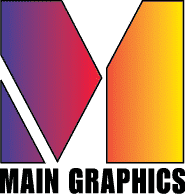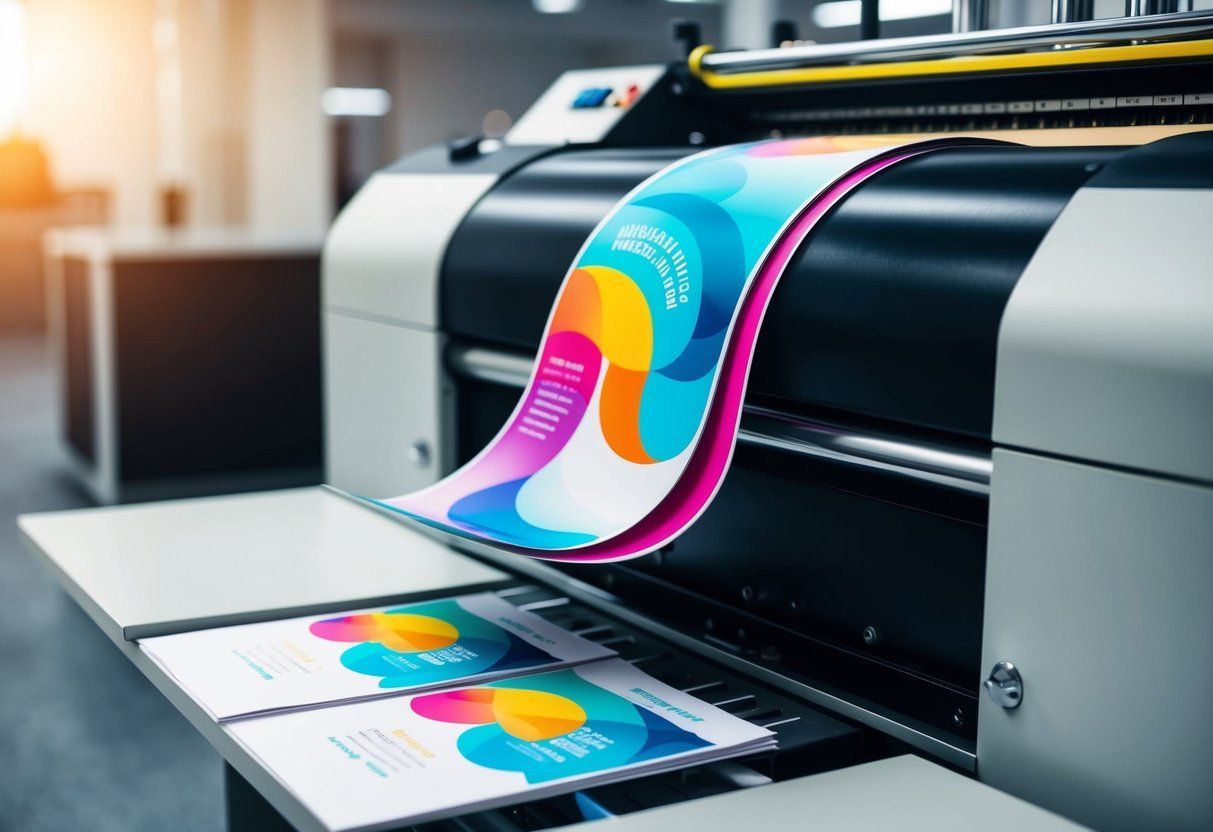Print Marketing Success Stories: How Businesses Achieved Their Goals
Print marketing has been a staple of business advertising for centuries, and it continues to be an effective tool for many businesses today. While digital marketing has become increasingly popular, print marketing has its own unique advantages, such as tangibility and a longer lifespan. In this article, we will explore several print marketing success stories and how businesses achieved their goals through their print marketing campaigns.

One of the key benefits of print marketing is its ability to target specific audiences. By carefully selecting the right publications and distribution channels, businesses can reach their desired demographic with ease. This was the case for a local gym that used print marketing to promote their new fitness classes. By placing ads in health and fitness magazines, they were able to attract a large number of new members who were interested in their classes.
Another advantage of print marketing is its ability to create a lasting impression. Unlike digital ads that can be easily ignored or forgotten, print ads can be kept and referred back to later. This was demonstrated by a luxury car dealership that used print marketing to promote their latest model. By sending out high-quality brochures to potential buyers, they were able to create a sense of exclusivity and desirability that ultimately led to increased sales.
Leveraging Print Marketing in the Digital Age
In today’s digital age, businesses have more options than ever before when it comes to marketing their products and services. While digital marketing has become increasingly popular in recent years, print marketing still has its place in the marketing mix. In fact, many businesses have found success by leveraging print marketing in creative ways.
Balancing Digital and Print Marketing
One of the biggest challenges businesses face in the digital age is finding the right balance between digital and print marketing. While digital marketing can be more cost-effective and provide more precise targeting options, print marketing can be more tactile and memorable.
To strike the right balance, businesses need to understand their target audience and what marketing channels they prefer. For example, if a business is targeting an older demographic, print marketing may be more effective. On the other hand, if the target audience is younger and more tech-savvy, digital marketing may be the way to go.
Overcoming Business Challenges with Creativity
Another way businesses can leverage print marketing in the digital age is by using creativity to overcome common business challenges. For example, one challenge many businesses face is standing out in a crowded market. By using unique print marketing materials, businesses can differentiate themselves from their competitors and make a lasting impression on potential customers.
Another challenge businesses face is getting their message in front of the right people. By using targeted print marketing campaigns, businesses can reach specific audiences in a way that digital marketing can’t always match. For example, a business could send out direct mail pieces to a specific neighborhood or demographic group.
In conclusion, print marketing still has a place in the marketing mix in the digital age. By finding the right balance between digital and print marketing and using creativity to overcome business challenges, businesses can achieve their marketing goals and stand out in a crowded market.
Strategies for Targeting and Engagement

Identifying the Target Audience
One of the most important aspects of print marketing success is identifying the target audience. Without a clear understanding of who the target audience is, it is impossible to create effective marketing campaigns. Businesses need to conduct market research to understand their target audience’s demographics, interests, and preferences. This information can be used to create targeted marketing campaigns that resonate with the audience.
Designing for Impact
Design plays a crucial role in print marketing success. A well-designed marketing piece can grab the attention of the target audience and leave a lasting impression. Businesses need to invest in high-quality design to ensure that their marketing materials stand out. This includes choosing the right colors, fonts, and images that align with the brand’s identity and appeal to the target audience.
Multichannel Marketing Approaches
Print marketing should not be viewed in isolation. A successful print marketing campaign should be integrated with other marketing channels to create a cohesive and effective marketing strategy. This includes using social media, email marketing, and other digital channels to reach the target audience. By using a multichannel approach, businesses can increase brand awareness and engage with their target audience on multiple fronts.
In conclusion, targeting and engagement are essential strategies for print marketing success. By identifying the target audience, designing for impact, and using a multichannel approach, businesses can create effective marketing campaigns that resonate with their audience and achieve their goals.
Real-World Successes: Case Studies

When it comes to print marketing, success stories abound. Here are a few real-world examples of businesses that have achieved their goals through print marketing.
Small Businesses Making Big Waves
Case Study: The Cupcake Shop
The Cupcake Shop, a small bakery in a suburban area, wanted to increase its customer base and boost sales. The owner decided to invest in a direct mail campaign, sending out postcards advertising the bakery’s new fall flavors and offering a discount for first-time customers.
The results were impressive. The bakery saw a 30% increase in foot traffic and a 20% increase in sales during the campaign period. The owner was thrilled with the results and plans to continue using direct mail in the future.
Case Study: The Pet Groomer
A small pet grooming business in a rural area wanted to increase its visibility and attract new customers. The owner decided to place an ad in the local newspaper and distribute flyers in the surrounding neighborhoods.
The campaign was a success. The business saw a 25% increase in new customers and a 15% increase in revenue. The owner was pleased with the results and plans to continue using print marketing to promote the business.
B2B Enterprises Maximizing ROI
Case Study: The Software Company
A B2B software company wanted to increase its lead generation and improve its ROI. The company decided to invest in a targeted direct mail campaign, sending out postcards to a list of potential customers in its target market.
The results were impressive. The campaign generated a 10% response rate and a 20% conversion rate, resulting in a significant increase in leads and revenue. The company plans to continue using direct mail as a part of its marketing strategy.
Case Study: The Marketing Agency
A B2B marketing agency wanted to improve its brand awareness and attract new clients. The agency decided to invest in a print advertising campaign, placing ads in industry publications and distributing brochures at trade shows.
The campaign was a success. The agency saw a 15% increase in website traffic and a 10% increase in new client inquiries. The agency plans to continue using print marketing to promote its services.
Overall, these case studies demonstrate the effectiveness of print marketing for businesses of all sizes and industries. By investing in targeted campaigns and measuring results, businesses can achieve their goals and maximize their ROI.
Print Marketing Innovations

Print on Demand and Ecommerce Integration
Print on demand (POD) has revolutionized the way businesses approach printing. In the past, companies had to order large quantities of printed materials, which could be costly and wasteful if they didn’t sell. With POD, businesses can print only what they need, when they need it, reducing waste and saving money.
Ecommerce platforms like Amazon, eBay, Etsy, and Shopify have also played a significant role in the success of print marketing. By integrating print-on-demand services into their platforms, these companies have made it easier for businesses to create and sell custom printed products. For example, Etsy’s print-on-demand service allows sellers to create custom designs for t-shirts, mugs, and other products, which are then printed and fulfilled by a third-party provider.
Advancements in Print Technology
Advancements in print technology have also contributed to the success of print marketing. Digital printing has made it possible to print high-quality materials quickly and at a lower cost than traditional offset printing. This has made it easier for businesses of all sizes to create custom printed materials, from business cards to brochures to large-format banners.
In addition, variable data printing (VDP) technology has made it possible to create personalized printed materials on a large scale. This technology allows businesses to create unique versions of a printed piece, such as a direct mail postcard, for each recipient. By tailoring the message and design to each recipient, businesses can increase the effectiveness of their marketing campaigns.
Overall, print marketing innovations have allowed businesses to create custom, targeted marketing materials that are more cost-effective and environmentally friendly than traditional printing methods. With the integration of ecommerce platforms and advancements in print technology, businesses can now reach their target audience with personalized, high-quality printed materials.
Measuring Success and ROI

When it comes to print marketing, measuring success and ROI is crucial for businesses to determine whether their efforts have been effective or not. In this section, we will discuss two key ways businesses can measure their success and ROI: tracking revenue and profits, and feedback and market response.
Tracking Revenue and Profits
One of the most straightforward ways to measure the success of print marketing is to track the revenue and profits generated from the campaign. Businesses can use tools such as sales data and financial reports to determine how much revenue and profit was generated during the campaign period. They can then compare these figures to their baseline revenue and profit to see if there was a significant increase.
For example, a local restaurant could run a print marketing campaign offering a discount on their menu items. By tracking their sales data during the campaign period and comparing it to their baseline sales data, they can determine whether the campaign was successful in generating more revenue.
Feedback and Market Response
Another way businesses can measure the success of print marketing is through feedback and market response. This can include conducting surveys to gather feedback from customers, monitoring social media and online reviews, and analyzing website traffic and engagement.
By gathering feedback from customers, businesses can determine whether their print marketing campaign resonated with their target audience. They can also use this feedback to improve future campaigns and make adjustments to their marketing strategy.
For instance, a fashion retailer could run a print marketing campaign featuring a new clothing line. By monitoring social media and online reviews, they can gauge the market response to the campaign and determine whether it was successful in generating interest and sales.
In conclusion, measuring success and ROI is essential for businesses to determine the effectiveness of their print marketing campaigns. By tracking revenue and profits and gathering feedback and market response, businesses can make data-driven decisions and improve their marketing strategies.
Frequently Asked Questions

What strategies have led to success in print marketing campaigns?
There are several strategies that have led to success in print marketing campaigns. First, it is important to identify the target audience and tailor the message to their needs and preferences. Second, using eye-catching designs and high-quality printing materials can help grab the attention of potential customers. Third, incorporating a clear call-to-action can encourage customers to take action and make a purchase. Finally, tracking and analyzing the results of the campaign can help identify areas for improvement and further success.
Can you provide examples of businesses that thrived using print on demand services?
Yes, there are many businesses that have thrived using print on demand services. For example, Redbubble is an online marketplace that allows artists to upload their designs and sell them on a variety of products, from t-shirts to phone cases. Another example is Printful, which offers print on demand services for businesses to create and sell their own custom products. Both of these businesses have seen success through their use of print on demand services.
What are the most profitable products to sell in a print on demand business model?
The most profitable products to sell in a print on demand business model depend on the target audience and niche. However, some popular products include t-shirts, phone cases, mugs, and posters. It is important to conduct market research and identify what products are in demand within the target audience.
How have companies leveraged custom packaging in print on demand for brand enhancement?
Companies have leveraged custom packaging in print on demand for brand enhancement by creating unique and memorable unboxing experiences for customers. This can include custom boxes, tissue paper, stickers , and other branded materials. By creating a positive and memorable experience for customers, companies can increase brand loyalty and repeat business.
What are the key factors to consider for a successful print advertising campaign?
The key factors to consider for a successful print advertising campaign include identifying the target audience, creating a clear and compelling message, using eye-catching designs and high-quality printing materials, incorporating a clear call-to-action, and tracking and analyzing the results of the campaign.
Which print on demand platforms are considered the best in 2023 for business growth?
The best print on demand platforms for business growth in 2023 include Printful, Redbubble, Teespring, and Zazzle. These platforms offer a variety of products and services, as well as integrations with popular e-commerce platforms like Shopify and WooCommerce. It is important to conduct research and choose a platform that aligns with the business’s goals and target audience.…










